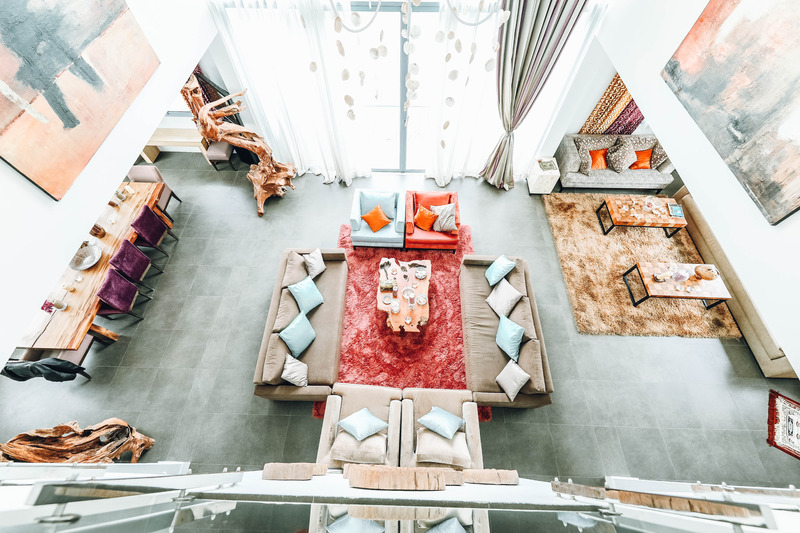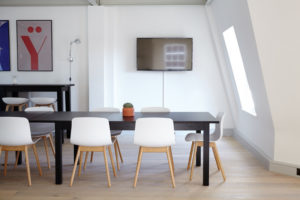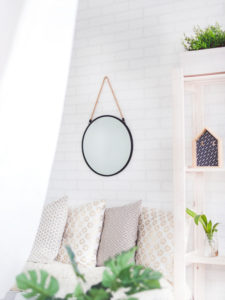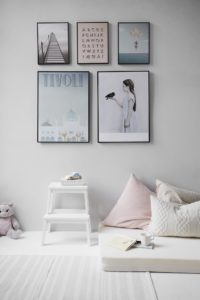4 Ways to Let the Sunshine In

Hi there lovelies. I wrote the title to this article with the song “Let the Sun Shine In” in my head lol. I love that song, and all the other sunshiney songs. I mean, most of us gravitate towards the sun…but did you know there is an actual biological reason for this. Biological organisms (that would be you, fungi, cats, hippos, ferns….) respond to light by producing proteins responsible for managing our sleep patterns, affecting how we feel mentally and physically. You may have heard of this. It’s called your circadian rhythm. It’s an important part of your biological clock managed by your hypothalamus. Light directly speaks to the section of your hypothalamus which is responsible for generating your clocks proteins. Natural light also increases Vitamin D levels and has been linked to decreased risk of heart disease, some cancers, obesity, bone density loss and depression. In fact recent studies show that hospital patients with windows out to nature and beautiful sunshine request fewer pain meds and leave hospital two days earlier on average than those without windows. So if natural light plays such an important role in our health and wellbeing, it only makes sense that we design our homes to allow for it. Lets see what we can do to help your home drink in that beautiful sunshine.

Light streams in through a nearby window.

A ceiling of windows lets plenty of natural light in and creates a conservatory feel.
Photo by Vincent Rivaud
BUILDING FOR LIGHT
If you’re in the building or renovating phase that’s great. This is the time to consider how you will be affected by light in your home. Positioning of your home can make a significant difference to not only the light but also the heat in your home. Windows to the northern side of your home are going to give you the most even light through out the day (Note: in the northern hemisphere you should position towards the south). Depending on your situation, consider reviewing your floor plan to give your living areas the best light possible.
Allow for shadow play in your home. You’d be surprised the difference it can make to your circadian rhythm and mental health when you can visually track the day by seeing the change in light throughout your home. You might do this using arbours, installing light wells, a highlight window that tracks sun across the floor or light filtering materials such as laser cut panels, curtains and trees throughout your home.
The number and size of windows will of course be important. Bigger is better. Don’t like the view? Add a sheer curtain. Or use a highlight window to capture a view of the sky. Use glass bricks in place of walls and sky windows to maximise your light. When you’re ready to dress your windows allow for them to be completely uncovered when open. Stack curtains onto the wall so they don’t obscure your window and use a sheer if you need to create privacy. It’s important to note that glass is not a great insulator so consider double or triple glazed windows and look into argon gas filled windows. Additionally, think about how your windows might be shielded from summer heat including extended eaves, awnings or deciduous planting nearby.
REFLECTIVE SURFACES
If you’re not in a position to alter your buildings structure don’t despair. Think about how you can capitalize on the light you already have coming in. Place reflective surfaces opposite to windows to bounce light through your home. A large beautiful mirror or mirrored splashback will not only bounce light but also make your home feel bigger. Reflective objects like ceramic vases, metallic home wares and gloss cabinetry can all act as reflective surfaces. Even a large piece of glass fronted artwork can reflect light.

A white wall and mirror reflect the light from the opposite window. Photo by Dominika Roseclay

Light coloured surfaces coupled with light furnishings create a light and airy interior.
COLOUR
Changing colours in your home can be one of the easiest ways to increase light. Colours have varying light reflective values. The lighter the colour the more light it will reflect. You won’t need to create a perfectly white sterile environment to achieve this either. Pastels and lighter neutrals are excellent choices for reflecting light. Look not only to your wall colours but your furnishings. Large elements in your home like rugs, sofas, bench tops and cabinet doors all offer opportunity for light reflection. Home wares such as cushions and art will also make a difference.
 FRESHEN UP
FRESHEN UP
This one is really simple but not always the first one thought of. Over time our surfaces become dirty. Windows become murky, walls, tiles, grout, home wares and even your ceiling become dirty. Clean your surfaces to maximise the light they can let in or reflect. In the case of your ceiling it will require a repaint as the paint is often more difficult to clean.
I hope this article has given you some ideas you can implement today and some to plan for in the future. Your wellness and that of your family’s is so important, so lets design for a better life. If you liked this article why not share it with someone you care about and join my community for future stories.
